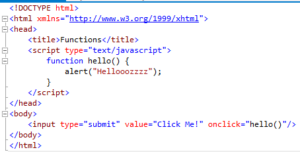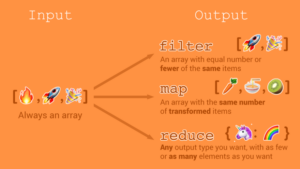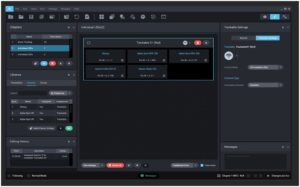Unveiling the Limitless Horizons: Exploring the Vast Applications of HTML

Introduction:
HTML (Hypertext Markup Language), born in the early days of the World Wide Web, has grown to become the cornerstone of web development, enabling the creation and structuring of digital content. However, its applications extend far beyond the confines of traditional web development. This article embarks on a comprehensive journey, unraveling the diverse and expansive applications of HTML across various domains, industries, and technological landscapes.
I. Web Development:
A. Core Markup Language:
- HTML forms the backbone of web development, serving as the core markup language for creating and structuring web pages.
- It provides the structural framework that browsers use to interpret and display content.
B. Dynamic Web Pages:
- Combined with CSS and JavaScript, HTML facilitates the creation of dynamic and interactive web pages.
- The trio of HTML, CSS, and JavaScript forms the foundation for modern web applications, delivering seamless user experiences.
C. Responsive Design:
- HTML5 introduces features that support responsive web design, enabling web pages to adapt to various screen sizes and devices.
- Responsive design, powered by HTML, ensures a consistent and optimized user experience across desktops, tablets, and mobile devices.
II. Mobile App Development:
A. Hybrid Mobile Apps:
- HTML is a key component in the development of hybrid mobile applications.
- Frameworks like Ionic and PhoneGap leverage HTML, CSS, and JavaScript to build cross-platform mobile apps with a single codebase.
B. WebViews:
- Mobile app development often utilizes WebViews, which embed web content within native applications.
- HTML plays a crucial role in rendering content within these WebViews, providing a bridge between web technologies and native mobile development.
III. Content Management Systems (CMS):
A. Website Content:
- Content management systems like WordPress, Joomla, and Drupal rely on HTML to structure and display website content.
- HTML tags are employed to format text, embed multimedia, and define the layout of articles and pages within these CMS platforms.
B. Customization:
- Users can customize the appearance and structure of their websites by editing HTML within the CMS.
- HTML knowledge empowers users to tailor their digital content to meet specific design and functionality requirements.
IV. E-Learning Platforms:
A. Course Content:
- HTML is employed in the creation of e-learning platforms, where it structures and presents educational content.
- HTML tags assist in organizing text, images, multimedia, and interactive elements within online courses.
B. Interactive Modules:
- HTML, in conjunction with JavaScript, enables the development of interactive e-learning modules.
- Quizzes, simulations, and multimedia presentations are seamlessly integrated into e-learning platforms using HTML.
V. Email Marketing:
A. Newsletter Formatting:
- HTML is widely utilized in email marketing for formatting newsletters and promotional emails.
- HTML tags allow marketers to control the layout, style, and multimedia elements within email campaigns.
B. Responsive Emails:
- HTML is crucial for creating responsive email designs that adapt to different devices.
- Responsive email templates ensure that marketing communications are effectively displayed on both desktop and mobile devices.
VI. Internet of Things (IoT):
A. Device Communication:
- HTML, when integrated with other web technologies, facilitates communication between IoT devices.
- IoT platforms leverage HTML to create web-based dashboards and interfaces for monitoring and controlling connected devices.
B. Data Visualization:
- HTML supports the display of real-time data and visualizations generated by IoT devices.
- Dashboards built with HTML provide users with a comprehensive view of IoT-generated data.
VII. Data Presentation and Reporting:
A. Data Tables:
- HTML is instrumental in presenting structured data through tables.
- Businesses use HTML to create data tables in reports, providing a clear and organized presentation of information.
B. Reporting Dashboards:
- Reporting tools often utilize HTML to create interactive dashboards for data analysis.
- HTML’s flexibility enables the incorporation of charts, graphs, and visualizations within reporting interfaces.
VIII. Scientific Research and Publishing:
A. Academic Journals:
- HTML is employed in the creation of online versions of academic journals and research publications.
- HTML tags structure and format the content, ensuring readability and accessibility for researchers and readers.
B. Interactive Figures:
- HTML supports the integration of interactive figures and multimedia elements in scientific publications.
- This enhances the presentation of research findings and allows for a more engaging and informative reading experience.
IX. Gaming Industry:
A. Online Games:
- HTML5 has revolutionized web-based gaming by providing support for multimedia elements and interactivity.
- HTML5 games, often built with frameworks like Phaser or Three.js, can be played directly in web browsers.
B. In-Game Interfaces:
- HTML is used to create in-game interfaces and menus for browser-based games.
- The integration of HTML allows for dynamic and customizable user interfaces within gaming environments.
X. Virtual and Augmented Reality (VR/AR):
A. WebXR:
- HTML is involved in creating immersive experiences through WebXR (Web Extended Reality).
- WebXR utilizes HTML to build virtual and augmented reality applications that can be accessed through web browsers.
B. Interactive Web Experiences:
- HTML, when combined with technologies like A-Frame, allows developers to create interactive and three-dimensional web experiences.
- This opens new frontiers in web-based VR and AR applications, making immersive content accessible to a broader audience.
XI. Social Media Platforms:
A. Profile Pages:
- Social media platforms use HTML to structure and present user profile pages.
- HTML tags format text, images, and other media, providing a standardized presentation across diverse user profiles.
B. Embedded Content:
- HTML is crucial for embedding content such as videos, images, and links within social media posts.
- Users and businesses leverage HTML to enhance the visual appeal and functionality of their social media content.
XII. Accessibility and Disability Accommodation:
A. Screen Readers:
- HTML plays a pivotal role in creating accessible web content for users with visual impairments.
- Semantic HTML tags provide meaningful structure, enabling screen readers to interpret and convey information effectively.
B. ARIA (Accessible Rich Internet Applications):
- HTML works in tandem with ARIA attributes to enhance accessibility in dynamic web applications.
- ARIA complements HTML by providing additional information to assistive technologies about the behavior and roles of web elements.
XIII. Government and Public Services:
A. Information Portals:
- Government websites use HTML to structure and present information to the public.
- HTML provides a standardized format for delivering essential services, resources, and updates.
B. Online Forms:
- HTML facilitates the creation of online forms for government services, allowing citizens to submit applications and information electronically.
- The use of HTML ensures the secure and efficient collection of data.
XIV. Personal and Portfolio Websites:
A. Digital Resumes:
- Individuals use HTML to create digital resumes and personal portfolio websites.
- HTML tags structure and format content, showcasing skills, experiences, and accomplishments in an organized and visually appealing manner.
B. Online Portfolios:
- Artists, photographers, and creatives leverage HTML to build online portfolios.
- HTML allows for the customization of portfolio layouts, enabling individuals to showcase their work in a way that aligns with their personal brand.
XV. Financial Services:
A. Online Banking:
- HTML is integral to the creation of online banking interfaces.
- HTML tags structure and format financial information, providing users with a secure and user-friendly experience.
B. Financial Reporting:
- Financial institutions use HTML for presenting reports, statements, and investment information.
- HTML’s flexibility allows for the incorporation of charts and graphs to enhance the visualization of financial data.
Conclusion:
In conclusion, the applications of HTML are as diverse and expansive as the digital landscape it helped shape. From the foundational role it plays in web development to its integral presence in mobile app development, e-learning, email marketing, and beyond, HTML remains a linchpin in the fabric of the digital world. As technology continues to advance, HTML evolves alongside it, opening new possibilities and applications across industries and domains. The versatility of HTML, combined with its accessibility and widespread adoption, ensures that its impact will endure, shaping the digital experiences of individuals and organizations for generations to come. Embracing and understanding the myriad applications of HTML is not merely a technical proficiency but a gateway to unlocking innovation, creativity, and the seamless integration of digital solutions in the multifaceted tapestry of our interconnected world.




